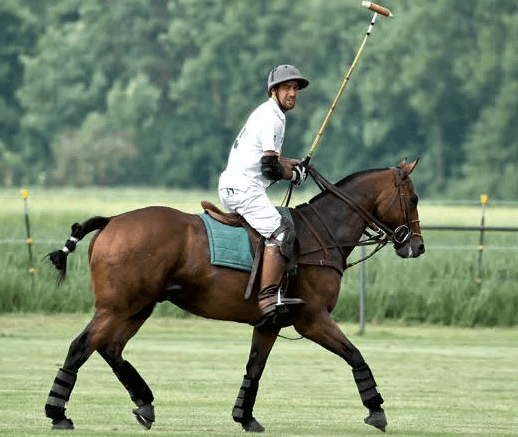What are the training routines for polo ponies?

Introduction
Polo is a sport that combines the agility of horses with the skill of their riders. Training a polo pony involves a comprehensive routine that ensures the horse is fit, responsive, and agile on the field. This article delves into the detailed training routines for polo ponies, providing insights into the conditioning exercises, daily practices, and care tips essential for maintaining peak performance and health.
Understanding Polo Ponies
Characteristics of a Polo Pony
Polo ponies are typically Thoroughbred or Thoroughbred crosses, known for their speed, stamina, and agility. They are usually between 14.2 and 16 hands high and possess a calm temperament combined with quick reflexes.
Importance of Training in Polo
Training is crucial in developing the horse’s athletic ability and ensuring it can perform the rapid starts, stops, and turns required in a polo match. Proper training also helps prevent injuries and prolongs the horse’s career.
Initial Training Phases
Early Handling and Socialization
Young ponies should be handled gently and frequently to build trust and confidence. Early socialization with humans and other horses helps in developing a well-adjusted and calm polo pony.
Basic Groundwork
Groundwork involves teaching the pony to respond to basic commands and signals. This includes leading, haltering, and lunging, which lay the foundation for ridden work.
Conditioning and Fitness
Cardiovascular Conditioning
Regular trotting and cantering help build the pony’s cardiovascular endurance. Gradually increasing the duration and intensity of these exercises is essential for developing stamina.
Strength Training
Incorporating hill work and resistance exercises helps in building muscle strength. Strong hindquarters and core muscles are crucial for the quick movements required in polo.
Flexibility and Agility
Exercises that promote flexibility and agility, such as pole work and figure-eights, are essential. These routines help the pony to perform tight turns and quick direction changes efficiently.
Advanced Training Techniques
Stick and Ball Training
Introducing the pony to the stick and ball is a critical phase. Initially, this can be done at a walk, progressing to trotting and cantering as the pony becomes more comfortable.
Chukkas Practice
Simulated chukkas, or practice matches, help the pony adapt to the pace and chaos of a real game. This also helps in honing the pony’s ability to work in sync with its rider and other ponies.
Desensitization
Desensitizing the pony to the sounds and movements typical of a polo match, such as the hitting of the ball and the shouts of players, ensures the horse remains calm and focused during games.
Daily Training Routines
Warm-Up and Cool-Down
A proper warm-up routine is vital to prevent injuries and prepare the pony for strenuous activity. Similarly, a cool-down period helps in the recovery process and reduces muscle stiffness.
Routine Exercises
Daily exercises should include a mix of trotting, cantering, and galloping. Incorporating varied terrain can also be beneficial for building overall fitness.
Rest and Recovery
Adequate rest is crucial for the pony’s recovery. This includes not only daily rest periods but also scheduled days off to prevent burnout and overtraining.
Health and Nutrition
Balanced Diet
A balanced diet rich in essential nutrients supports the pony’s overall health and performance. This typically includes quality hay, grains, and specialized supplements as needed.
Regular Veterinary Care
Regular check-ups by a veterinarian are necessary to monitor the pony’s health. This includes vaccinations, dental care, and routine deworming.
Hoof and Dental Care
Proper hoof care, including regular trimming and shoeing, is vital. Dental care ensures the pony can chew food efficiently and maintain proper nutrition.
Psychological Training
Building Trust
Developing a strong bond between the pony and its trainer is essential. This involves consistent handling, positive reinforcement, and patience.
Addressing Behavioral Issues
Any behavioral issues should be addressed promptly with a calm and systematic approach. This can include professional help if necessary.
Special Considerations for Polo Ponies
Age and Training Intensity
Younger ponies require a gentler training regimen to avoid stress and injuries. Older ponies might need adjusted routines to cater to their changing physical capabilities.
Tailoring Training to Individual Ponies
Each pony is unique and may require a customized training program. Observing and adjusting based on the pony’s performance and behavior is key.

Conclusion
Training routines for polo ponies are multifaceted, requiring a balance of physical conditioning, skill development, and psychological care. By following structured and comprehensive training routines, trainers can ensure their ponies are well-prepared for the demands of the sport while maintaining their health and well-being.
FAQs
What is the ideal age to start training a polo pony?
Typically, training starts at 3 to 4 years old, once the pony has matured physically.
How often should a polo pony be exercised?
Daily exercise is recommended, with a mix of light and intense workouts, and regular rest days.
What are the signs of overtraining in polo ponies?
Signs include lethargy, reluctance to work, poor performance, and physical injuries such as lameness.
Can older horses be trained for polo?
Yes, older horses can be trained, but their routines should be adjusted to accommodate their physical condition.
How important is nutrition in the training of polo ponies?
Nutrition is crucial as it supports the pony’s energy needs, muscle development, and overall health.
What role does mental training play in the training of polo ponies?
Mental training is vital for developing trust, reducing anxiety, and ensuring the pony remains focused and calm during matches.






